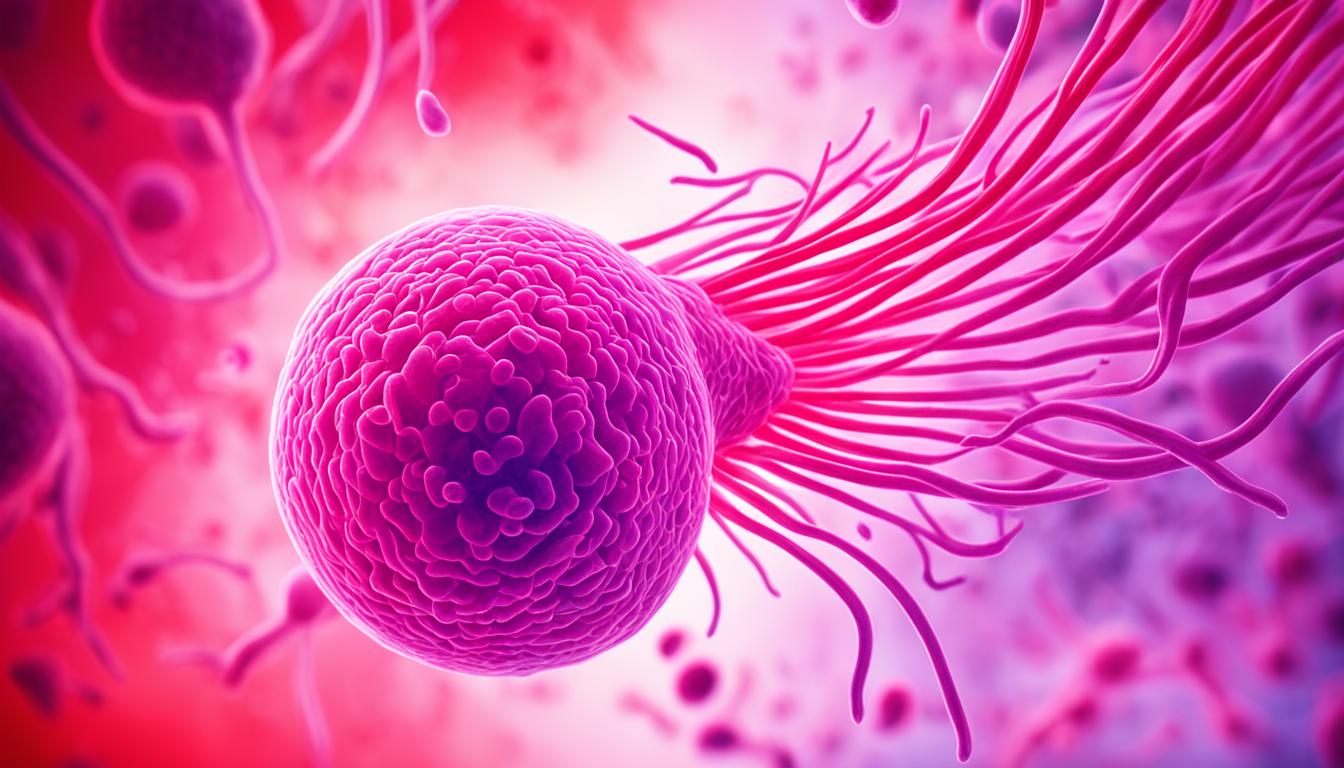Did you know that 80% of people who get tinea versicolor might see it again? This shows we need good, natural ways to treat it. In this guide, we will look at remedies that are safe and work well without using harsh chemicals or drugs.
Tinea versicolor is a fungal problem that creates patches on the skin. Some people like to try natural ways instead of conventional treatments. We will talk about using apple cider vinegar, honey, aloe vera, turmeric, and coconut oil. Also, we will see how Selsun Blue shampoo can help, which you can buy without a prescription.
But we won’t only talk about natural treatments. We’ll also cover how to stop tinea versicolor from coming back and how to know if you should see a doctor. Our aim is to give you all the info you need to deal with tinea versicolor naturally, so you can keep your skin healthy.
Key Takeaways
- Tinea versicolor is a common fungal skin condition that can be treated with natural remedies.
- Natural treatments like apple cider vinegar, honey, aloe vera, turmeric, and coconut oil have been explored for their antifungal properties.
- Selsun Blue shampoo, containing selenium sulfide, is a popular over-the-counter solution for managing and preventing tinea versicolor.
- Maintaining good skin hygiene, minimizing sun exposure, and using breathable fabrics can help prevent the recurrence of tinea versicolor.
- Consulting a healthcare provider is recommended for severe or persistent cases of tinea versicolor, as well as to rule out other skin conditions.
What is Tinea Versicolor?
Tinea versicolor is a common fungal skin condition caused by too much Malassezia yeast. This yeast lives on everyone’s skin normally. Things that make it grow more include hot, damp weather, lots of sweating, oily skin, a weak immune system, and changes in hormones.
Causes of Tinea Versicolor
An overgrowth of Malassezia yeast is the main cause of tinea versicolor. This can happen because of many things like hot and humid climates, excessive sweating, oily skin, a weakened immune system, and hormonal changes. As it grows, it causes the skin to develop the telltale discolored patches.
Symptoms of Tinea Versicolor
The key sign of tinea versicolor is seeing discolored patches on your skin. These patches might be lighter or darker than the rest of your skin. They’re often dry and scaly, and they might stand out more if you get a tan. Even though your skin’s color changes, tinea versicolor isn’t something you can pass on to others.
Conditions Similar to Tinea Versicolor
Tinea versicolor looks like other skin issues but is unique. It’s caused by a fungus, so skin color changes. Vitiligo, however, is an autoimmune condition where the skin loses color. It can cause white spots. Pityriasis rosea is a kind of skin rash. It begins with one big “herald patch” and then smaller patches appear. This is different from tinea versicolor’s uneven skin color changes.
Tinea Versicolor vs Vitiligo
Vitiligo and tinea versicolor look similar but have different causes. Vitiligo makes skin lose color, leading to white patches. A fungus causes tinea versicolor, creating either lighter or darker spots. It’s important to know these differences for the right diagnosis and treatment.
Tinea Versicolor vs Pityriasis Rosea
Pityriasis rosea is a rash that can look like tinea versicolor. But it starts with a big patch and then gets smaller patches. This is unlike tinea versicolor, where patches are scattered and irregular. Knowing how these conditions differ helps in choosing the right treatment.
It’s vital to recognize both the similarities and the differences between tinea versicolor and other skin issues. Knowing these can help doctors properly treat patients. By knowing what makes each condition unique, healthcare professionals can offer the best care.
Conventional Treatments for Tinea Versicolor
For tinea versicolor, you can use over-the-counter (OTC) topical antifungal meds. You might also need prescription topicals and oral antifungals. These help by stopping the Malassezia yeast from growing, getting rid of the infection.
Over-the-Counter Topical Antifungals
OTC options have clotrimazole, miconazole, selenium sulfide, and terbinafine. These come as creams or lotions. They’re good for mild cases of the infection.
Prescription Topical Antifungals
Doctors may give you ketoconazole, ciclopirox, or terbinafine solutions. These are stronger than OTCs. They’re for tougher or bigger infections of tinea versicolor.
Oral Antifungal Medications
If your case is severe, you might need oral antifungal pills. Examples are fluconazole, itraconazole, and ketoconazole. They work well, but they can have side effects like nausea. They might affect your liver, but this is usually reversible.
Tinea Versicolor Natural Treatment
Some people prefer natural solutions for natural remedies for tinea versicolor. For example, apple cider vinegar used with ketoconazole shampoo has worked well. Studies show that acacia honey and aloe vera can also help reduce symptoms. They may stop the fungus that causes tinea versicolor home treatments for fungal skin infections.
Turmeric can help with itchiness and color changes. Coconut oil is thought to keep the skin from getting worse. These natural antifungal properties could be helpful. But, we don’t know if they work as well as regular treatments.
| Natural Remedy | Potential Benefits | Evidence Level |
|---|---|---|
| Apple Cider Vinegar | May inhibit fungal growth when used with ketoconazole | Moderate |
| Honey | May improve symptoms in some cases | Limited |
| Aloe Vera | May inhibit fungal growth | Moderate |
| Turmeric | May reduce itching and discoloration | Limited |
| Coconut Oil | May prevent fungal growth | Moderate |
Looking into holistic approaches to tinea versicolor can be smart. But, remember, these methods haven’t been studied enough. It’s best to talk to a doctor before trying them, especially for a bad or long-lasting case.
Using Selsun Blue for Tinea Versicolor
Selsun Blue is a popular dandruff shampoo that contains 1% selenium sulfide. It’s used to treat selsun blue for tinea versicolor. Selenium sulfide fights the yeast that causes this infection. For best results, apply Selsun Blue to the infected areas. Let it sit for 10 minutes before rinsing off. Besides the regular kind, there’s also a 2.5% strength available by prescription. Using it as a body wash a few times each week can stop the infection from coming back.
Even though Selsun Blue works well for dandruff shampoo treatments tinea versicolor, there are some things to know. Side effects can be skin irritation, dry skin, and hair that’s too oily or too dry. A bit of hair loss might happen too. Allergic reactions are rare, but avoid using on kids under 2 without a doctor’s OK. And for pregnant women, talk to a doctor to make sure it’s safe.
There are many over-the-counter antifungal solutions besides Selsun Blue for tinea versicolor. These include antifungal creams and lotions. There are also stronger medicines by prescription. It’s best to see a doctor. They can choose the treatment that’s right for you. They’ll consider how bad the infection is and your personal health.
Preventing Recurrence of Tinea Versicolor
Tinea versicolor often comes back, making it important to prevent future outbreaks. Lifestyle changes and regular treatments can help manage this fungal skin issue. By doing this, you can lower the risk of it happening again.
Lifestyle Changes
To stop tinea versicolor from coming back, avoid places that are very hot, humid, or make you sweat a lot. This is because the Malassezia yeast likes these conditions. To stay cool and dry, wear clothes that let your skin breathe and aim to stay out of the sun. Fans or air conditioning can also be helpful.
Maintenance Treatments
Even after you’ve treated tinea versicolor once, you might need to keep up with treatments to stop it from returning. Using special shampoos or body washes with selenium sulfide, ketoconazole, or terbinafine can help. For some people, taking occasional prescription antifungal medicines, like fluconazole or itraconazole, works well to prevent the fungus from growing back.
Being proactive about treating tinea versicolor with lifestyle changes and regular treatments can lower how often you get it. This common skin condition doesn’t have to be a constant problem if you care for your skin well.
Is Tinea Versicolor Contagious?
Unlike some fungal skin issues, tinea versicolor does not spread between people. A certain yeast on most skin causes it. The growth of this yeast leading to patches is not from touching others. It’s not something you catch from someone else.
Diagnosing Tinea Versicolor
Tinea versicolor is often found by looking at the discolored skin patches. Doctors might run more tests to confirm and find the exact fungus.
Wood’s Lamp Examination
The Wood’s lamp uses a special light to show if you have tinea versicolor. It can make the infected skin turn yellow or green, showing the Malassezia yeast.
Potassium Hydroxide (KOH) Microscopy
KOH microscopy is another test. A small piece of skin is looked at under a microscope. This finds fungal bits, making the diagnosis sure.
Skin Biopsy
Sometimes, a skin biopsy is needed for a clear diagnosis. A piece of the skin is taken to see the Malassezia yeast. This also rules out other reasons for the skin color.
Doctors use many methods to diagnose tinea versicolor. They look closely, use the Wood’s lamp, KOH microscopy, and sometimes a skin biopsy. With these, they can find a treatment that works best.
Treatment Duration and Outlook
With the right tinea versicolor treatment, the scaly rashes usually start to clear up within 1-2 weeks. The skin discoloration, however, might take 6 months to a year to completely heal.
Even after it looks like the infection is gone, tinea versicolor might come back, especially in warm, humid areas. So, you might need to keep up with treatment to stop it from returning.
| Symptom | Clearance Timeline |
|---|---|
| Scaly rashes | 1-2 weeks with treatment |
| Skin discoloration | 6 months to 1 year to fully fade |
The first infection might get better, but the skin discoloration could stay for quite a while. Using antifungal products on a regular basis can prevent the infection from coming back, especially in warm, humid environments.
Risk Factors for Tinea Versicolor
Some things can make you more likely to get tinea versicolor. This is a fungal skin condition caused by too much Malassezia yeast. Key risk factors are:
- Having a family history of tinea versicolor can make you more likely to get it.
- Too much sweat can help Malassezia yeast grow quickly, starting an infection.
- Living in a warm, humid place makes it easier for the yeast to thrive, upping your risk.
- A weakened immune system, like from cancer or certain meds, raises the chances of fungal skin infections.
Factors that lead to more Malassezia yeast and higher tinea versicolor risk include having oily skin. Also, using birth control pills, being pregnant, or not eating well. Knowing these points can help you prevent or deal with a fungal skin infection.
When to See a Doctor
If tinea versicolor doesn’t go away with basic antifungal creams, see a doctor. They’ll diagnose correctly and offer stronger treatments as needed. They also check for any other health problems that might make fungal skin infections worse. It’s critical to seek a doctor’s help if the rash is bad, widespread, or not getting better on its own.
Seeing a dermatologist is key for treating discolored skin. They can run tests like Wood’s lamp exams to identify the Malassezia yeast. This makes sure you’re not treating the wrong thing.
Before the visit, prepare with a list of questions about the condition. Ask about the cause, treatments, and how to avoid it coming back. Working with your doctor, you can set up a plan to handle and stop tinea versicolor in the future.
Cost of Tinea Versicolor Treatments
The cost of tinea versicolor treatments can change based on the product used. Over-the-counter antifungal creams and lotions are usually cheaper. They can cost between $20 and $50 for each tube or bottle.
Prescription topical antifungals and oral medications are usually pricier. Their prices are about $50 to $100 or even higher. How much insurance covers, the infection’s seriousness, and the brand can affect the price of antifungal medications. People should talk to their doctor about treatment choices and how much they’ll need to spend.
| Treatment Type | Typical Cost Range |
|---|---|
| Over-the-Counter Antifungal Creams/Lotions | $20 to $50 per tube/bottle |
| Prescription Topical Antifungals | $50 to $100+ |
| Prescription Oral Antifungals | $50 to $100+ |
The cost of tinea versicolor treatments can be different. This is true when comparing over-the-counter and prescription options. It’s important for patients to talk with their doctors. Together, they can find the best treatment that fits the patient’s budget and needs.
Conclusion
Tinea versicolor is a common skin issue caused by a fungus. It leads to patches of different color on the body. While medicines work well to clear it up, some like to try natural ways.
Things like apple cider vinegar, honey, aloe vera, turmeric, and coconut oil might help. But these natural options haven’t been fully proven like medicines have.
To tackle tinea versicolor, knowing its causes, signs, and treatments is key. This helps people choose the best way to deal with it. It also reduces the chance of it coming back.
Choosing how to treat tinea versicolor depends on what you like, how bad it is, and what a doctor suggests. Looking into all choices, natural or medical, can lead to the right path for you. This way, you can keep your skin healthy and bright.
FAQ
What is tinea versicolor and what causes it?
What are the symptoms of tinea versicolor?
How is tinea versicolor different from other skin conditions?
What are the conventional treatments for tinea versicolor?
What are some natural remedies for treating tinea versicolor?
How can Selsun Blue be used to treat tinea versicolor?
How can I prevent recurrence of tinea versicolor?
Is tinea versicolor contagious?
How is tinea versicolor diagnosed?
What is the typical treatment duration and outlook for tinea versicolor?
What factors can increase the risk of developing tinea versicolor?
When should I see a doctor for tinea versicolor?
How much do tinea versicolor treatments cost?
Source Links
- https://www.verywellhealth.com/treatment-of-tinea-versicolor-1069275
- https://www.webmd.com/skin-problems-and-treatments/tinea-versicolor-cause-symptoms-treatments
- https://www.drberg.com/blog/best-home-remedies-for-tinea-versicolor
- https://www.healthline.com/health/tinea-versicolor
- https://www.mayoclinic.org/diseases-conditions/tinea-versicolor/diagnosis-treatment/drc-20378390
- https://skinandcancerinstitute.com/everything-you-need-to-know-about-tinea-versicolor/
- https://www.webmd.com/drugs/2/drug-14389/selsun-blue-topical/details
- https://www.mountsinai.org/health-library/diseases-conditions/tinea-versicolor
- https://www.medicalnewstoday.com/articles/315779
- https://www.ncbi.nlm.nih.gov/books/nbk482500/
- https://www.mayoclinic.org/diseases-conditions/tinea-versicolor/symptoms-causes/syc-20378385
- https://www.goodrx.com/conditions/tinea-versicolor/drugs
- https://www.ncbi.nlm.nih.gov/pmc/articles/PMC9677953/




